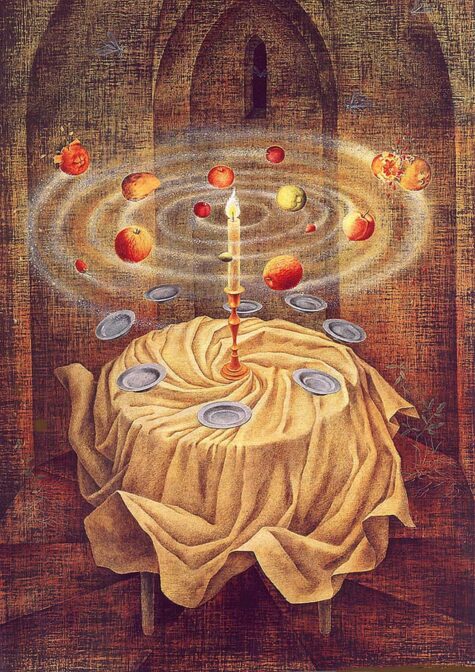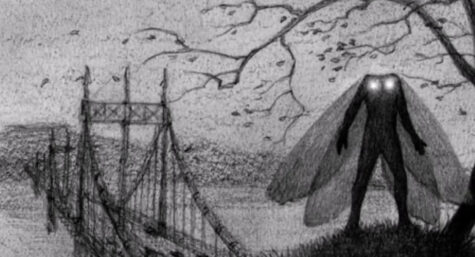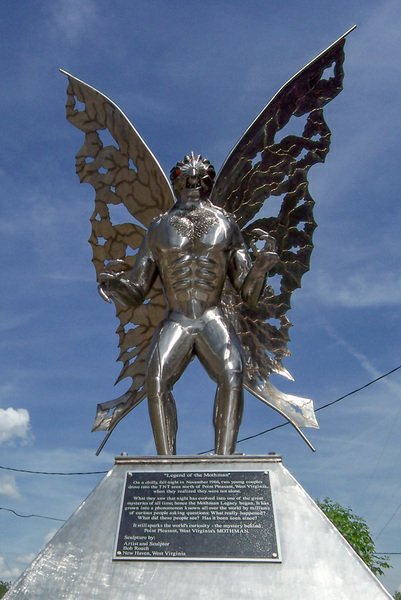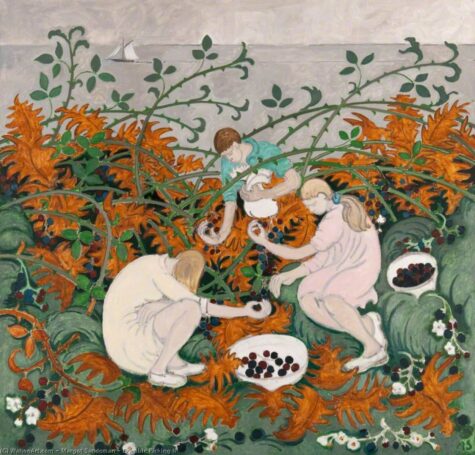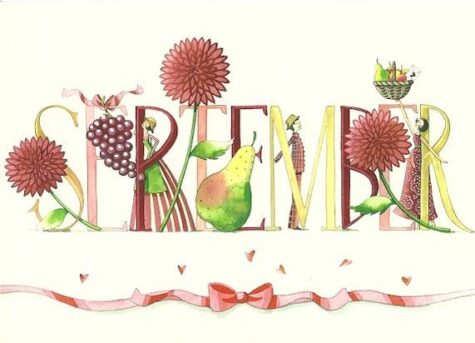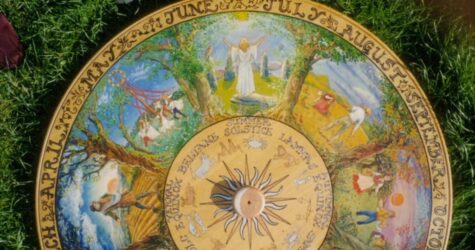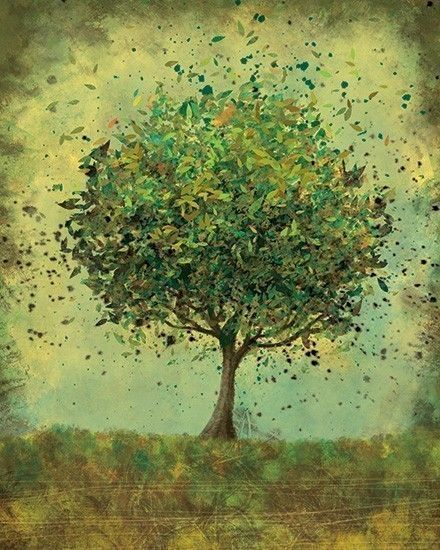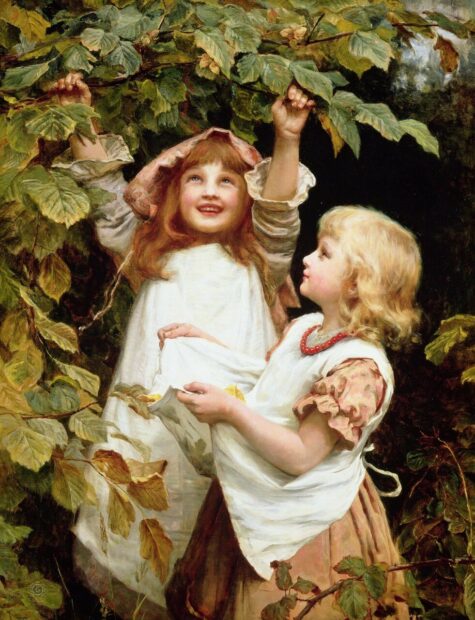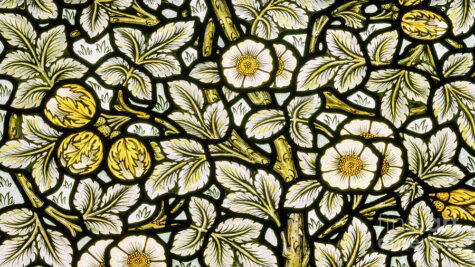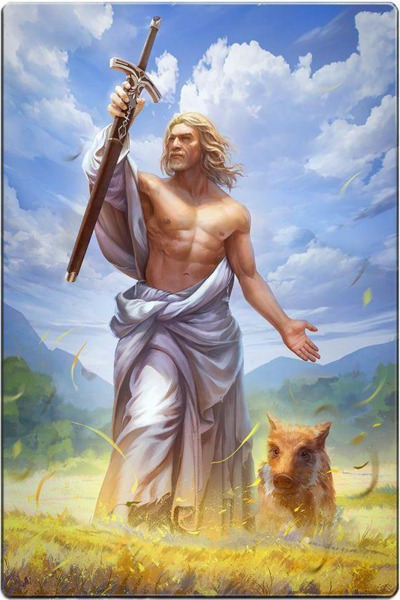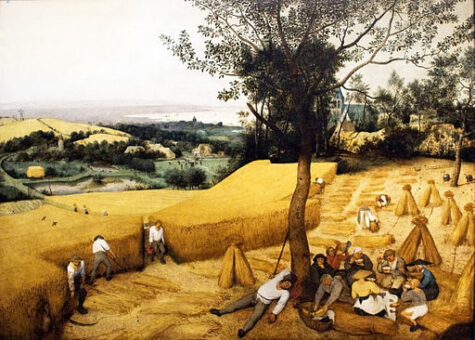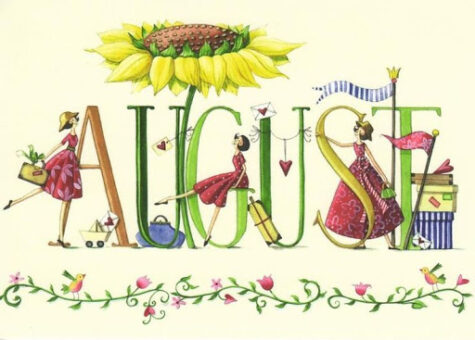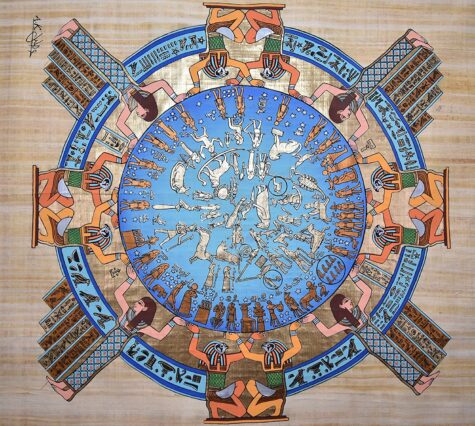shirleytwofeathers
The Autumn Equinox – or Mabon – is a time of harvesting and celebration. Often called “Witches’ Thanksgiving,” it’s a prosperity holiday which asks us to gather with one another to count our blessings, connect, and re-balance. The nights are about to become longer, and soon we’ll be turning inward.
Mabon is a celebration of life and death, and giving of life again, the cycle of the seasons. Mabon is a time to enjoy the fruits of a hard year’s labor, to stock up for the long winter. No matter how you celebrate Mabon, it is important to know that Mabon a time for giving thanks.
The Mothman Festival is an annual gathering commemorating the visit of the mysterious entity known only as “The Mothman.”
This event is held every third weekend in September that commemorates the 1966 Point Pleasant, West Virginia Mothman sighting, which gave birth to the infamous red-eyed winged legend. People from all over the world gather to celebrate their favorite cryptid during this one of a kind event.
A Terrifying Tale
In November 1966, gravediggers working in a cemetery in Clendenin, West Virginia, spotted a strange, man-like figure in the trees above their heads.
A few days later, two young couples from Point Pleasant reported being chased by a large creature with 10-foot wings whose eyes “glowed red” while driving near a former military munitions site outside town.
Sightings of what area newspapers dubbed the “Mothman” continued throughout the next year, oftentimes leaving witnesses with a deep sense of dread. Many locals believed the Mothman lived in a vacant nuclear power plant outside Point Pleasant, perhaps the escaped product of some secret government experiment.
The sightings came to an abrupt halt in December 1967, however, after a horrific tragedy in Point Pleasant. The Silver Bridge—which carried U.S. Route 35 over the Ohio River—collapsed on under the weight of heavy rush hour traffic, killing 46 people.
Coincidence?
The fact that the collapse was later attributed to a faulty suspension chain didn’t stop the conspiracy theories. In 1975, writer John Keel wrote a book titled The Mothman Prophecies linking the bridge collapse with the Mothman sightings. In it, Keel suggested that the sightings were actually bad omens about the impending bridge collapse.
In 2002 the book was turned into a movie starring Richard Gere and Laura Linney, and the spooky West Virginia legend exploded onto the national stage.
The small town of Point Pleasant fully embraced its most famous resident, welcoming the annual Mothman Festival in 2002, installing a 12-foot metallic statute of the creature in 2003, and opening the Mothman Museum and Research Center in 2005.
And in the news…
POINT PLEASANT, WV (WCHS/WVAH) — Hunters in Mason County may need to be on the lookout for something other than deer when they hit the woods this week.
The Point Pleasant Mothman is a local legend that over the years has gained worldwide fame.
There hadn’t been any recent sightings of the red-eyed creature recently, but that changed Sunday evening, when a man who says he was driving along State Route 2 saw something jump from tree to tree. He pulled off the road and snapped some pictures.
The man declined an on-camera interview, but was adamant the pictures had not been doctored. He said he recently moved to Point Pleasant for work and didn’t even know about the legend.
In the pictures, the creature appears to have wings with pointed tips and long legs, bent at an awkward angle.
Point Pleasant locals such as Carolin Harris believe the pictures could be real because there have been so many other sighting over the years.
“I definitely know the Mothman is real,” Harris said.
Harris has owned The Mothman Diner in Point Pleasant for 48 years. She also helped start the Mothman Festival. Harris said there have been too many sightings of the Mothman for her not to believe.
“First responders and the sheriff’s department that I talked to definitely made a believer out of me.” Harris said.
Some believe The Mothman is a bad omen, only appearing when catastrophe is about to strike. There have been many claims the winged, red-eyed creature was seen right before the Point Pleasant Silver Bridge collapsed in 1967.
Harris has met many Mothman believers over the years who visit her diner.
On Monday, Karen and Ralph Smith were patrons at the diner. The couple was traveling from Florida to Pennsylvania, but decided to stop off in Point Pleasant to visit the Mothman Museum.
Karen Smith said she hopes she can add herself into the “believer” category.
“You have eyewitnesses. It does have the potential to be real, and I want to believe,” Smith said.
The Smiths said the Mothman pictures look real to them. So Eyewitness News asked Jeff Wamsley, the local Mothman expert and owner of the Mothman Museum.
Wamsley said with modern technology, it’s almost impossible to know for sure if the pictures are real.
Whether the pictures are real or not, the benefits the legend of the Mothman brings to the town of Point Pleasant are very real.
“It’s a good thing. It brings lots of people to the area. He’s here to stay,” Harris said.
The Wikipedia Story
On November 15, 1966, two young couples from Point Pleasant, Roger and Linda Scarberry and Steve and Mary Mallette, told police they saw a large grey creature whose eyes “glowed red” when the car’s headlights picked it up. They described it as a “large flying man with ten-foot wings”, following their car while they were driving in an area outside of town known as “the TNT area”, the site of a former World War II munitions plant.
During the next few days, other people reported similar sightings. Two volunteer firemen who saw it said it was a “large bird with red eyes”. Mason County Sheriff George Johnson commented that he believed the sightings were due to an unusually large heron he termed a “shitepoke”.
Contractor Newell Partridge told Johnson that when he aimed a flashlight at a creature in a nearby field its eyes glowed “like bicycle reflectors”, and blamed buzzing noises from his television set and the disappearance of his German Shepherd dog on the creature.
Wildlife biologist Robert L. Smith at West Virginia University told reporters that descriptions and sightings all fit the sandhill crane, a large American crane almost as high as a man with a seven-foot wingspan featuring circles of reddish coloring around the eyes. The bird may have wandered out of its migration route, and therefore was unrecognized at first because it was not native to this region.
Folklorist Jan Harold Brunvand notes that Mothman has been widely covered in the popular press, some claiming sightings connected with UFOs, and others claiming that a military storage site was Mothman’s “home”.
Brunvand notes that recountings of the 1966–67 Mothman reports usually state that at least 100 people saw Mothman with many more “afraid to report their sightings” but observed that written sources for such stories consisted of children’s books or sensationalized or undocumented accounts that fail to quote identifiable persons.
Brunvand found elements in common among many Mothman reports and much older folk tales, suggesting that something real may have triggered the scares and became woven with existing folklore. He also records anecdotal tales of Mothman supposedly attacking the roofs of parked cars occupied by teenagers.
Conversely, Joe Nickell says that a number of hoaxes followed the publicity generated by the original reports, such as a group of construction workers who tied flashlights to helium balloons. Nickell attributes the Mothman stories to sightings of barn owls, suggesting that the Mothman’s “glowing eyes” were actually red-eye effect caused from the reflection of light from flashlights or other bright light sources.
Benjamin Radford points out that the only report of glowing “red eyes,” was secondhand, that of Shirley Hensley quoting her father.
According to University of Chicago psychologist David A. Gallo, 55 sightings of Mothman in Chicago during 2017 published on the website of self-described Fortean researcher Lon Strickler are “a selective sample”. Gallo explains that “he’s not sampling random people and asking if they saw the Mothman – he’s just counting the number of people that voluntarily came forward to report a sighting.” According to Gallo, “people more likely to visit a paranormal-centric website like Strickler’s might also be more inclined to believe in, and therefore witness the existence of, a ‘Mothman’.”
Some pseudoscience adherents (such as ufologists, paranormal authors, and cryptozoologists) claim that Mothman was an alien, a supernatural manifestation, or a previously unknown species of animal. In his 1975 book The Mothman Prophecies, author John Keel claimed that the Point Pleasant residents experienced precognitions including premonitions of the collapse of the Silver Bridge, unidentified flying object sightings, visits from inhuman or threatening men in black, and other phenomena.
Festival and Statues
Point Pleasant held its first Annual Mothman Festival in 2002. The Mothman Festival began after brainstorming creative ways for people to visit Point Pleasant. The group organizing the event chose the Mothman to be center of the festival due to its uniqueness, and as a way to celebrate its local legacy in the town.
According to the event organizer Jeff Wamsley, the average attendance for the Mothman is an estimated 10–12 thousand people per year. A 12-foot-tall metallic statue of the creature, created by artist and sculptor Bob Roach, was unveiled in 2003. The Mothman Museum and Research Center opened in 2005.
The festival is held on the third weekend of every September, hosting guest speakers, vendor exhibits, pancake-eating contests, and hayride tours of locally notable areas.
In June of 2020, a petition was started to replace all Confederate statues in the United States with statues of Mothman. As of July 2020, the petition has garnered over 2,000 signatures.
Sources:
According to Tibetan and Vedic astrology, there are a cluster of stars, called the ‘Rishi’ stars, that ‘appear’ for one week each year – usually during the 8th lunar month (September). According to Tibetan astrology, the Rishi stars will be ‘out’ this year from Sept. 9-15. In Tibetan this is known as ‘Karma Rishi.’
According to Hindu legend, these stars were once great sages of the past, who, upon their death, ascended up into the heavens and became these stars. When they are visible in the night sky, their light is said to possess special healing powers that transform all water into a healing nectar.
Some sources state these stars are the Ursa Major, or the ‘big dipper,’ also known as the Sapta Rishi stars, who are associated with the seven great Rishis of Vedic lore. Other sources say this is the Canopus star, which is associated with the Rishi Agastya, and is said to be the ‘cleanser of waters.’
Typically, Tibetan doctors and healers would place buckets of water outside during this time, then use this water for making their medicines. Lama Dawa remembers how His Holiness Matrul Rinpcoche – a great Tibetan physician – would then boil this water down, thus concentrating it, then use this water to make the herbal medicinal pills, and also to consecrate the water with healing mantras.
Another way of benefiting from this healing water is to bathe in pools, ponds or rivers during this time. Or, collect water in buckets and use that for bathing. Any water – whether it is ocean, river, stream, or water in pools, is imbued with the healing qualities of the stars.
This water can be used to make healing tinctures, or for giving to pets and plants. Even the water in our own bodies can be ‘blessed’ and purified by this special healing energy by exposing your body to the night sky when the stars are out.
It is a particularly auspicious time to do practices such as the Vajra Armor mantra, which is used to consecrate water, or Medicine Buddha mantras and offering pujas.
Prayer:
Rangrig Dorje Rinpoche offers this prayer and mantra to be said while taking a bath outside under these stars:
༈ཇི་ལྟར་བལྟམས་པ་ཙམ་གྱིས་ནི། ལྷ་རྣམས་ཀྱིས་ནི་ཁྲུས་གསོལ་ལྟར།
JI-TAR TAM-PA TSAM-GYI NI / LHA-NAM KYI-NI TRU-SOL TAR /
ལྷ་ཡི་ཆུ་ནི་དག་པ་ཡིས། དེ་བཞིན་བདག་གིས་ཁྲུས་བགྱིའོ།
LHA-YI CHU-NI DAG-PA YI / DE-ZHIN DAG-GI TRU-GYI O /
- Mantra:
ཨོཾ་སརྦ་ཏ་ཐཱ་ག་ཏ་ཨ་བྷི་ཥེ་ཀ་ཏ་ས་མ་ཡ་ཤྲཱི་ཡེ་ཧཱུྃ༔
OM SARWA TAT’HAGATA ABHISHEKA TA SAMAYA SHRI YE HUNG
- Aspiration:
འདི་ནི་ཁྲུས་མཆོག་དཔལ་དང་ལྡན། ཐུགས་རྗེའི་ཆུ་ནི་བླ་ན་མེད།
DI-NI TRU-CHOG PAL-DANG DEN / T’HUG-JE’I CHU-NI LA-NA MED /
བྱིན་རླབས་ཡེ་ཤེས་ཆུ་ཡིས་ནི། ཅི་འདོད་དངོས་གྲུབ་སྩོལ་བར་མཛོད།
JIN-LAB YE-SHE CHU-YI NI / CHI-DOD NGO-DRUB TSAL-WAR DZOD
Western Astrology:
Western astrologer, Terry Nazon, offered this information about the Sapta Rishi Stars:
“They are the fixed stars of Ursa Major the Big Dipper. They are always visible…but during that time in September as the constellation late Leo and early Virgo is right above us in the night sky…they are closest then and right above us.
Because the earth is moving and just like the moon moves across the night sky so will the big dipper…it can also be that the Sun is activating them…for planets and stars to be effective they have to be triggered by a planet or star like the sun.
If you are “charging” water you will want to place the water where it receives the most exposure. For instance maybe there’s tree blocking the Big Dipper in your front yard…and remember, we are made up of 60 % water and in ancient Kabbalah, the text said to bath ourselves in this planetary “rain” they called it.”
The Rishi stars:
- 1. Dubhe The Bear:
Astrology, arrogance, psychic power, destruction; aka Krathu, one of the 7 Rishis (Hindu sages) in Ursa Major; Bast Isis, the Egyptian goddess; “The Eye”; “Heaven’s Pivot”
- 2. Merak:
Prudent, restrained, mistrustful, self-controlled (but angry when roused), love of command, power to achieve, good with animals; Pulaha, one of the 7 Rishis (Hindu sages) of Ursa Major
- 3. Phecda:
Civilising influence, tamer of beasts, transmission of divine knowledge; Pulasthya, one of the 7 Rishis (Hindu sages) of the Great Bear, Ursa Major; bloodbaths, assassinations, riots, sexual perversion
- 4. Tania Borealis:
In the right hind paw of Ursa Major, along with Tania Australis, this star was part of an early Arabian constellation, The Gazelle, of which this group is the “Second Leap”. The Great Bear is mainly martial in action, considered unfortunate for nations and kings.
- 5. Megrez:
Spiritual sight; creativity; violence; Atri, one of the 7 Rishis (Hindu sages), the ruling star of the Great Bear, Ursa Major
- 6. Alioth, The Black Horse:
Suicide among women; danger in pregnancy; Angirasa, one of the 7 Rishis (Hindu sages) in Ursa Major
- 7. Mizar:
Connected with fires of a catastrophic extent and mass calamities; Vasishta, one of the 7 Rishis (Hindu sages) of Ursa Major
- 8. Alula Borealis:
Hindmost foot of Ursa Major. As the northern Alula, it is more fortunate. Associated with female infidelity & revenge. The Great Bear gives a quiet, prudent, suspicious, mistrustful, self-controlled, patient nature, but an uneasy spirit; great anger when roused.
The Canopus Star:
The Canopus star is the second brightest star after Sirius. In Indian Vedic literature, the star Canopus, known as the ‘smiling star’ is associated with the sage Agastya, one of the ancient rishis (the others are associated with the stars of the Big Dipper). Agastya, the star, is said to be the ‘cleanser of waters’ and its rising coincides with the calming of the waters of the Indian Ocean.
Canopus is a bright star most easily visible in the Southern Hemisphere. It is in the constellation Carina, the keel. The star is of a fairly rare type, considered a class F giant on the main sequence of stars. This means it has a mass close to that of the sun.
Because the star’s spectral class is not well studied, it is difficult to establish how far away Canopus is. Parallax measurements with the Hipparcos satellite have established it to be about 313 light-years away.
Canopus can’t be seen from most locations in Europe and North America. Observers in northern latitudes south of 37°N can find the star below Sirius in the southern sky on winter evenings. Canopus is at its highest in February around 9 pm. It is located about 36 degrees to the south of Sirius.
In science fiction, Canopus is perhaps best known for being the parent star for Arrakis, a dusty desert planet in the “Dune” universe.
Canopus is used in space navigation to adjust the position of spacecraft in space. Many spacecraft are equipped with a special camera called the Canopus Star Tracker.
Sources:
The Vine is a symbol of both happiness and wrath — passionate emotions, both of them. Do magical workings this month connected to the Autumn Equinox, or Mabon, and celebrate garden magic, joy and exhilaration, wrath and rage, and the darker aspect of the mother goddess. Use the leaves of the Vines to enhance your own ambition and goals. during this month. The month of Vine is also a good time to get balanced, as there are equal hours of darkness and light.
This is the time of great abundance. Spells concerning happiness and great passion are best done at this time. This is the perfect time for your ambitions, goals, and dreams.
- Dates: September 2 – September 29
- Celtic Name: Muin
- Language of Flowers (Bramble): Lowliness, Remorse, Envy,
- Qualities (Bramble): Flexibility, Tenacity, Fierceness, Beauty Reward for Hard Work,
- Themes: Harvest, Reward, Tenacity, Vigor, Health and Healing.
The Autumn Equinox, when night and day are equal length, occurs during the month of the Vine and will help you to realign your energy to prepare for the dark half of the year.
This is a time to value input from others because collaborative work brings insights and networks that are made in the time of the Vine may prove useful in the forthcoming months.
Focus on energy that resolves, cast peace to end an argument or use prosperity energy to help you settle bills and pay off existing debts. Energy must be balanced with action now, so use nature’s last burst of energy, visible in the vibrant autumn colors, to inspire you to complete projects begun earlier in the year.
Invest in your health by eating foods packed with vitamin C to stave off colds as the weather declines. Boost your energy levels with herbal drinks.
Use your energy during the month of the Vine to restore peace to troubled relationship and to bring prosperity and fertility into your life.
Note:
The Celtic word for Blackberry, taken from the ogham tree letters is ‘muin’. Sometimes, people will interpret ‘muin’ as ‘vine’ – but a vine as we now know it (a grapevine) was not a native plant in Celtic Britain and Ireland where the ogham evidence we have derives from – and so it is now more commonly thought that ‘muin’ refers to the Blackberry. Both fruits (grape and Blackberry) are used in money energy and are linked to fairies.
Vine the Equalizer
The Vine is another shapeshifter of the Celtic astrology. This is due to the fact that people born under this sign are born within the autumnal equinox. This makes them unpredictable, contradictive, and often indecisive. They can see the good and bad in each story, which makes it hard for them to pick a side. However, they are always sure when it comes to their taste in food, wine, music and art – they have a soft spot for guilty pleasures. Vines have a thing for luxury and refinement. Willow and Hazel can suit their classic style.
They are quiet, discreet, they never draw attention on them, they do not raise their voice and very often you do not notice when they are around. Nevertheless, the saying “Still waters run deep” describes them well. Hazel people are usually very intelligent, they have great memory, good intuition and the ability to learn quickly. They come across as plain but potent people. Exactly this type of people used to be considered a saint or blamed for witchcraft a few centuries ago.
Hazel people usually achieve their goals easily because they are able to take advantage of all their abilities. In relation to others, they tend to be friendly, helpful and easy-going. They can be very patient, understanding and selfless, and they are very generous to their friends. They always start everything with love and goodness because they believe that is the easiest way to achieve things.
Thanks to their foresight and high intelligence they often come up with unusual ideas and solutions that they have thought through to the smallest details.
Although Hazel people tend to be successful in life, they do not like to be spoiled by luxury. They are perfectly adaptable and even little things can make them happy. Fluctuations in their mood are seldom caused by external conditions. So there are moments in their lives when it is better to get out of their way. The same is true about their love life; most of the time they are loving partners, but sometimes they become very grumpy. Still, life with Hazel people is interesting and pleasant, albeit full of change. They are usually reliable and faithful partners in marriage.
Magick and Lore of the Bramble
Our Celtic ancestors valued the Bramble (or Blackberry) as a symbol of spiritual wisdom, emotions, and initiation.
The Bramble shows us flexibility, tenacity, and vigor – and also the importance of connection as the Bramble branches reach out and connect all the other trees and bushes in their thorny embrace. Blackberry is health-giving and healing – a nourishment for our body and soul.
Blackberry is about good preparation (gathering for winter), a healthy reward for hard work and risks taken (blackberrying at risk of prickles), and the importance of being ready to act at the right time (picking brambles when they are ripe, but before they are taken by the witches’ or fairies’ poison).
It was often advised to pick blackberries only in the waxing moon, to gain protection from ill-will.
Many traditions over the correct timing of Blackberry picking have arisen, most focusing on the specific date after which blackberries should never be picked – variously advising dates from the end of August, Michaelmas Day (29 September), or the end of September, or Halloween (31st October) as the blackberries will have been poisoned, spat on, or peed on by fairies, witches, or even the Devil.
It’s likely that the varying dates relate to how far north or south the blackberries grow, so relating to the change in weather – as the late crop of blackberries taste sour in any case and you could certainly believe that they’d been poisoned by witches (or worse, peed on by fairies) were you to taste one.
Elsewhere, blackberries were never eaten – especially in France and Majorca where they believed brambles were made into Christ’s crown of thorns – while in Brittany, it was because they were the food of the fairy folk.
Magick and Lore of the Vine
The Vine month is a time of great harvest — from the grapes of the Mediterranean to the fruits of the northern regions, the Vine produces fruits we can use to make that most wondrous concoction called wine.
The Vine is fast-growing, prolific, and none like each other. They are all unique and adapt with things growing around them. The most valued vine was the grape vine, as it was the source for wine.
The vine is the only plant in the Celtic Tree Calendar that is not native to Britain, although it features in much Bronze Age art. It was cultivated by migrants from Southern Europe.
The name vine comes from the word ‘viere’, meaning ‘to twist’. This refers to the Druidic concept of spiritual development.
A Spell For Peace
Use your energy to bring peace to a troubled relationship or to help heal any conflict or dispute. You will need:
- A white candle
- A white ribbon
- Pen and paper
Hold the candle and say, “I dedicate this candle to peace.”
Write a list of grievances that caused the conflict. Light the candle and focus on sending love to the other party. Burn the list in the flame saying, “For the sake of peace, I let it go.”
Light the candle for a few moments each night and focus on peace. Tie the ribbon to a Bramble or grapevine. When the leaves have all fallen, peace will be restored.
Sources:
There is a lot to celebrate in September. This is a list of pretty much everything that goes on during the ninth month of the year. Many of these dates change from year to year. The days that change are marked with this » symbol.
September Lore and General Info

Astronomical Events
- Sept 6 » New Moon
- Sept 7 thru Dec 10: Taurids Meteor Shower
- Sept 20 » Full Moon – Barley Moon, Harvest Moon
- Sept 22: Autumn Equinox – dates may vary slightly from year to year
Astrological Events
Depending on which astrological system you adhere to, these are the signs that show up in September of 2021. Be aware that some of these dates will vary from year to year. Unlike the Sun signs which might just shift by 1 or 2 days, the dates of the various Moon signs will vary widely from year to year. The same holds true for the Chinese Zodiac. The Celtic Tree Signs are based on an arbitrary system and stay the same from year to year.
The September Sun begins in Virgo and finishes up in Libra:
- Aug 22 thru Sep 22 » Sun in Virgo
- Sep 22 thru Oct 22 » Sun in Libra
The moon cycles through the signs as follows:
- Aug 29 – Sept 1 » Moon in Gemini
- Sept 1 – Sept 3 » Moon in Cancer
- Sept 3 – Sept 5 » Moon in Leo
- Sept 5 – Sept 8 » Moon in Virgo
- Sept 8 – Sept 10 » Moon in Libra
- Sept 10 – Sept 12 » Moon in Scorpio
- Sept 12 – Sept 14 » Moon in Sagittarius
- Sept 14 – Sept 16 » Moon in Capricorn
- Sept 16 – Sept 18 » Moon in Aquarius
- Sept 18 – Sept 21 » Moon in Pisces
- Sept 21 – Sept 23 » Moon in Aries
- Sept 23 – Sept 26 » Moon in Taurus
- Sept 26 – Sept 28 » Moon in Gemini
- Sept 28 – Oct 1 » Moon in Cancer
You will notice that the Moon might begin the day in one sign and by the end of the day may have moved into another sign, so timing matters if you are wanting to be precise.
The Celtic Tree Signs in September:
- Aug 5 thru Sept 1: Month of the Hazel Tree
- Sept 2 thru Sept- 29: Month of the Vine
- Sept 30 thru Oct- 27: Month of the Ivy
- Sept 21 thru Autumn Equinox: Aspen/Poplar
The Alternative Celtic Zodiac is as follows:
- Pine: Aug 25 – Sept 3
- Willow: Sept 4 – Sept 13
- Lime: Sept 14 – Sept 22
- Alder: Sept 23 (Autumnal Equinox)
- Hazel: Sept 24 – Oct 2
The Chinese Calendar and Zodiac
We are currently in the year of the Ox (sometimes referred to as the Cow). Each Month is also assigned a specific animal. Here’s what shows up in September 2021.
- Monkey » Aug 7 – Sep 6 (Chinese Zodiac – Stem Branch Calendar)
- Monkey » Aug 8 – Sep 6 (Lunar Calendar – 7th Month)
- Chicken » Sept 7 – Oct 7 (Chinese Zodiac – Stem Branch Calendar)
- Chicken » Sept 7 – Oct 5 (Lunar Calendar – 8th Lunar Month)
Note: The traditional Chinese Astrology birth chart is built by the Chinese Stem Branch Calendar, not the Chinese Lunar Calendar, which I think is really confusing. Because of a difference in time zones, the lunar months will have a different pattern between China and the USA.
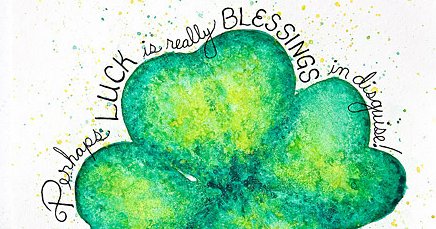
Lucky and Unlucky Days
You might want to plan moving, traveling, major purchases, court dates, and weddings around these dates, avoiding the unlucky days and utilizing the lucky ones. Interestingly, the 18th of September is both lucky and unlucky.
- These are the lucky days in September:
4, 8, 17, 18 and 23. - These are the unlucky days in September:
9, 10, 16, and 18.
Fatal Days
The third day of the month September
And tenth bring evil to each member.
Holidays and Holy Days
Many of the holidays begin on the eve of the night before and end on the eve of the day of. It’s also important to remember that the dates of archaic festivals and feast days may vary widely depending on the source.
September 2
- 2 » Dakini Day (Tibetan)
- 2 » Day of Ekadashi (Hindu)
- 2 thru 13: Ganesh Chaturthi
September 4
- 4: Ludi Romani
September 5
September 6
- 6 » Labor Day
September 7
- 7 » The Noumenia
- 7 » Rosh Hashanah
September 8
September 9
- 9: Double Ninth Day (alternatively celebrated on the 9th day of the 9th Lunar month)
- 9 thru 15: The Rishi Stars appear
September 11
- 11: Patriot Day
September 13
- 13: Ides of September – The Epulum Jovis
September 16
- 16 » Yom Kippur
September 17
- 17 » Friday the 17th
- 17: Constitution Day
- 17 » Day of Ekadashi (Hindu)
September 19
- 19: The Fast of Thoth – this day-long fast honors the Egyptian god of wisdom and magic.
September 20
- 20 » Keirō no Hi – Respect for the Aged Day (Japan)
- 20 » Chinese Moon Festival -The Festival of Chang O, on the full moon nearest the autumnal equinox. Some Chinese celebrate this day as the moon’s birthday.
September 21
- 21 » Sukkot
- 21: Birthday of Athena, Greek Goddess of Wisdom also known as Sophia
- 21: The Feast of the Divine Life – honors the great goddess in her three-fold aspect as mother (creator), daughter (renewer), and dark mother (the absolute)
September 22
September 29
- 29: Michaelmas
Saint Days
There is a surprising amount of magick associated with Saint days. This is a very short list of the Saint days in September, there are many many more. As time goes by I may end up listing them all, but for now, this is what I have.
- 21: Nativity of Blessed Mary

Recipes For September
- Modaka for Ganesha Chathurthi
- Mid Autumn Mooncake
- Easy Chinese Mooncakes
- Nine Layer Cake – Double Ninth Day
Many more seasonal recipes, including recipes for new and full moon ceremonies, ancient Greek and Roman holidays, Asian festivals and etc can be found here: Seasonal Recipes.
![]()
Notes:
Any September lore, almanac, astrological, and celebration dates that have been shared after this post was published can be found by searching the September posts to see what’s new.
A lot of work went into this post which was compiled from various sources by Shirley Twofeathers for The Pagan Calendar, you may repost and share without karmic repercussions, but only if you give me credit and a link back to this website. Blessed be.
The festival of Nemoralia (aka Festival of Torches) was celebrated by the ancient Romans either on 13–15 August or on the August Full Moon, in honor of the goddess Diana (Diana Nemorensis). This festival was later adopted by Catholics as The Feast of the Assumption.
Ovid describes the celebration thus:
“In the Arrician valley, there is a lake surrounded by shady forests, Held sacred by a religion from the olden times… On a long fence hang many pieces of woven thread, and many tablets are placed there as grateful gifts to the Goddess. Often does a woman whose prayers Diana answered, With a wreath of flowers crowning her head, Walk from Rome carrying a burning torch… There a stream flows down gurgling from its rocky bed…”
On this day, worshippers would form a shimmering procession of torches and candles around the dark waters of Lake Nemi, Diana’s Mirror. The lights of their candles join the light of the moon, dancing in reflection upon the surface of the water. Today’s festival is held in the Greek fashion.
Hundreds join together at the lake, wearing wreaths of flowers. According to Plutarch, part of the ritual (before the procession around the lake) is the washing of hair and dressing it with flowers. It is a day of rest for women and slaves. Hounds are also honored and dressed with blossoms. Travelers between the north and south banks of the lake are carried in small boats lit by lanterns. Similar lamps were used by Vestal virgins and have been found with images of the Goddess at Nemi.
One 1st century CE Roman poet, Propertius, did not attend the festival, but observed it from the periphery as indicated in these words to his beloved:
“Ah, if you would only walk here in your leisure hours. But we cannot meet today, When I see you hurrying in excitement with a burning torch To the grove of Nemi where you Bear light in honour of the Goddess Diana.”
To Do Today
Requests and offerings to Diana may include: small written messages on ribbons, tied to the altar or to trees; small baked clay or bread statuettes of body parts in need of healing; small clay images of mother and child; tiny sculptures of stags; dance and song; and fruit such as apples.
In addition, offerings of garlic are made to the Goddess of the Dark Moon, Hecate, during the festival. Hunting or killing of any beast is forbidden on Nemoralia.
Source: Wikipedia
The Hazel Month offers you an opportunity to connect with your inner reserves of wisdom. Now is the time to listen to your intuition. Study of all kinds is blessed during the Hazel Month, so energy that uses ancient knowledge is most effective now.
This is also an excellent time to learn to read Tarot Cards or Runes because lunar energy will enhance your memory and psychic powers. Maintain an optimistic approach and follow your enthusiasm.
- Dates: August 5 – September 1
- Celtic Name: Coll
- Language of Flowers: Reconciliation
Qualities: Wisdom, knowledge, protection, love, healing, understanding, inspiration, divination - Themes: Life Force, Wisdom, Protection, Knowledge, The Creative Muse.
Hazel, known to the Celts as Coll, translates to “the life force inside you,” is the time of year when Hazelnuts are appearing on the trees, and are an early part of the harvest. This is the month of wisdom and protection and magick concerning these areas are best done at this time.
This is a good month to do workings related to wisdom and knowledge, dowsing and divination, and dream journeys. If you’re a creative type, such as an artist, writer, or musician, this is a good month to get your muse back, and find inspiration for your talents. Even if you normally don’t do so, write a poem or song this month.
Bring the creativity and inspiration of the Hazel into your life both at work and at home. Use this time to inspire your inner creativity and wisdom or to ground yourself in nature.
- Enroll in an evening class. Now is an auspicious time to learn a new skill – try a painting class, learn a language or dance.
- Keep a journal. Just writing down your wishes and experiences will help you tune into your inner wisdom.
- Go outside at night and look at the Moon. Staying connected to nature will bring powerful insights and help you remain grounded.
- Feed your mind. Buy a book of inspiring quotes and read one each day to stimulate and sharpen your thinking.
- Eat a feast of salmon and hazelnuts before an exam to heighten your powers of concentration and boost your memory.
Hazel the Knower
When a person is born under the energy of the Hazel, he or she becomes highly intelligent, organized and excels in the classroom. Just like the Holly, this Celtic tree sign is naturally gifted when it comes to knowledge. They possess the ability to recite and recall information, which makes them appear as know-it-all to others. However, you can’t blame the Hazel for being naturally smart.
They are quiet, discreet, they never draw attention on them, they do not raise their voice and very often you do not notice when they are around. Nevertheless, the saying “Still waters run deep” describes them well. Hazel people are usually very intelligent, they have great memory, good intuition and the ability to learn quickly. They come across as plain but potent people. Exactly this type of people used to be considered a saint or blamed for witchcraft a few centuries ago.
Hazel people usually achieve their goals easily because they are able to take advantage of all their abilities. In relation to others, they tend to be friendly, helpful and easy-going. They can be very patient, understanding and selfless, and they are very generous to their friends. They always start everything with love and goodness because they believe that is the easiest way to achieve things.
Thanks to their foresight and high intelligence they often come up with unusual ideas and solutions that they have thought through to the smallest details. This clever sign from the Celtic tree horoscope pairs well with the Hawthorn and Rowan signs.
Hazel Magick and Lore
The Hazel tree is known as the Tree of Immortal Wisdom or the Tree of Wisdom and Learning. Hazel branches have been used over history for divining due to their pliancy and affinity for water. The Hazel tree encourages us to seek out wisdom, information, and inspiration in all things both living and inorganic.
In the south-west of England, the Hazel was said to be surrounded by silver snakes around its roots, giving the tree its special life force – an ability to understand all, swiftly, and to understand all connections.
A forked Hazel branch was often used by dowsers – representing the forked tongue of the snake, or perhaps the dual aspect of life and death, which the Hazel also symbolizes.
Hazel branches should only be cut with the tree’s permission – and Hazel rods cut on Midsummer’s Eve are the most powerful. Draw a circle around your bed with a Hazel stick to keep nightmares away. Dreaming about a Hazel tree indicates wealth and unexpected good fortune in the future.
“Wishing wands” (seen in Teutonic myths) were cut from Hazel. It was said that to cut a Hazel wand, you should find a tree that’s not yet fruited, and using a ‘magical sickle’, cut a branch in a single stroke, at sunrise on a ‘day ruled by Mercury’ (a Wednesday).
The Hazel is the Celtic Tree of Knowledge, the Poet’s Tree, a magical tree, and tree of fairies. It’s a tree of wisdom, of understanding and connection, and a tree of clear communications. It’s a tree of life and death, bridging the worlds and enabling connection and communication between the worlds – a tree of health, healing, and protection – and a tree of love!
In Ancient Rome, Hazel torches were lit on the wedding night to ensure a happy marriage. And in Devon, brides would be met from church by an old lady carrying a basket of hazelnuts, for luck.
A sprig of Hazel by the door of a home, or on a windowsill or by a window-opening, was supposed to be able to protect against lightning – and Hazel twigs gathered on Palm Sunday were thought to guard against both lightning and fire.
Hazel Energy Meditation
Practicing this meditation will help you to move through creative blocks, open to inner guidance and develop your intuition.
- Approach a Hazel tree from the north.
- When you are within the circumference of its branches, introduce yourself and ask permission to come closer.
- If it feels right to proceed, circle the trunk clockwise.
- Try to sense the spirit of the tree and open your heart.
- Sit with your back against the trunk and breathe deeply.
- Empty your mind and attune to the tree’s energy.
Sources:
Freyfaxi, Freysblöt, or Hlæfæst (which means Loaf Feast) which celebrates the beginning of the harvest. There is no specific “correct” date for this harvest festival; some groups celebrate it at the beginning of the month (to coincide with Lammas), some mid-month, and some on the full moon.
Freyr is the Norse god of fertility and harvest and a blöt is a sacrifice or offering to a god. So Freysblöt is offerings to Freyr, this is done in celebration of the beginning of harvest. The feast is also thought of as holy to Thor as a harvest God and his wife Sif, whose long golden hair can be seen in fields of ripe grain.
The first sheaf of harvested grain was bound and blessed for the gods and the vaettir (land or place spirits). Bread baked from the first harvest was also made into an offering and shared with the community.
In Viking times this is also when the warriors who had gone off to fight at the end of planting season came back, loaded with a summer’s worth of plunder and ready to reap the crops that had ripened while they were gone. It is almost like American thanksgiving, feasting and celebrating the first fruits and grains from harvest.
In modern times this is often just before back-to-school giving families and kindreds a good opportunity to celebrate together before the added stresses of homework and extracurricular activities. While the celebrations were modest compared to some of the other major holidays it was still an excellent reason to gather in celebration and to recognize the prosperity in our lives.
Since it draws from First Harvest traditions, the dates would vary regionally, but falls sometime in the beginning of August, because that is when many of our gardens are coming into full production. Typically in the northern hemisphere it is around this time that we celebrate the bounty of the Earth, and the gifts that she brings us with the help of Frey.
In truth, “Freyfaxi” is basically made up and can be celebrated by any group that wants to when they want to. It isn’t wholly without reference, as it draws on a history of First Harvest traditions, but it isn’t historical by any means. Wikipedia pins it on August 1st, the Ásatrú Alliance’s holidays page dates it as August 19th, and many Pagan Calendars date it to August 23rd.
Loaf-Feast is the end of the summer’s vacation, the beginning of a time of hard work which lasts through the next two or three months, while we ready ourselves for the winter.
The holiday of FreyFaxi was much more important for the lives of our ancestors that it is today. Without a good harvest, many many people would perish in the winter. We honor Frey to thank him for the many harvests that we have had, if there was one terrible one, some of us may not be here today. Thanks to Frey we are. If a year was particularly horrible, drastic sacrifice would be used – animal, or even human in some cases.
Even though many of us are no longer farmers, we still depend on the land for all that we are given. Maybe we do not depend on it directly but most of us go to the grocery store and buy things that have come from the fields. This is a time to honor Frey, god of the harvest, rains, and fertility. A time to thank him for the bounty of the earth, and all the gifts that he bestows upon us.
Today we honor him with mead, or some type of drink, food from our table, typically foods we harvest ourselves, for example baked bread that we have made ourselves from the wheat he has bestowed upon us. It is traditional to mark the holiday by baking a figure of the God Freyr in bread, and then symbolically sacrificing and eating it. Any way that you honor Frey, is a good way. Traditionally however, it is with a blot and feast.
We honor him because without him, simply we would not have much of our food supply, and quite obviously without that, we do not have much at all! He bestows fertility to the fields and plants, gives them life, giving rain so that they may grow and flourish. These plants including trees, give us oxygen. So if you are not going to honor Frey, son of Njord, for the bounty of the land at least honor him for the life of the plants and world around us!
We honor Frey by giving him a blot, and a grand feast from our own gardens and the fields. (If you do not have these things at least go spend some money and get a few things from a farmers market or something similar). We thank Frey, and honor him for the harvest and the fertility of the land and ask him to give the land even greater fertility in the coming year and in the dark of winter.
Sources:
There is a lot to celebrate in August. This is a list of pretty much everything that goes on during the eighth month of the year. Many of these dates change from year to year. The days that change are marked with this » symbol.
August Lore and General Info

Astronomical Events
- August 8 » New Moon
- July 3 thru August 11: Dog Days of Summer
- August 22 » Full Moon – Corn Moon, Blue Moon
- July 12 thru August 23: Delta Aquarids Meteor Shower
- July 17 thru August 24: Perseids Meteor Shower
Astrological Events
Depending on which astrological system you adhere to, these are the signs that show up in August of 2021. Be aware that some of these dates will vary from year to year. Unlike the Sun signs which might just shift by 1 or 2 days, the dates of the various Moon signs will vary widely from year to year. The same holds true for the Chinese Zodiac. The Celtic Tree Signs are based on an arbitrary system and stay the same from year to year.
The August Sun begins in Leo and finishes up in Virgo:
- Jul 22 thru Aug 22 » Sun in Leo
- Aug 22 thru Sep 22 » Sun in Virgo
The moon cycles through the signs as follows:
- Jul 30 – Aug 2 » Moon in Taurus
- Aug 2 – Aug 4 » Moon in Gemini
- Aug 4 – Aug 7 » Moon in Cancer
- Aug 7 – Aug 9 » Moon in Leo
- Aug 9 – Aug 11 » Moon in Virgo
- Aug 11 – Aug 14 » Moon in Libra
- Aug 14 – Aug 16 » Moon in Scorpio
- Aug 16 – Aug 18 » Moon in Sagittarius
- Aug 18 – Aug 20 » Moon in Capricorn
- Aug 20 – Aug 22 » Moon in Aquarius
- Aug 22 – Aug 24 » Moon in Pisces
- Aug 24 – Aug 27 » Moon in Aries
- Aug 27 – Aug 27 » Moon in Taurus
- Aug 29 – Sep 1 » Moon in Gemini
You will notice that the Moon might begin the day in one sign and by the end of the day may have moved into another sign, so timing matters if you are wanting to be precise.
The Celtic Tree Signs in August:
- Jul 8 – Aug 4: Month of the Holly Tree
- Aug 5 – Sep 1: Month of the Hazel Tree
The Alternative Celtic Zodiac is as follows:
- Cypress: Jul 25 – Aug 4
- Poplar: Aug 5 – Aug 14
- Larch: Aug 15 – Aug 24
- Pine: Aug 25 – Sep 3
The Chinese Calendar and Zodiac
We are currently in the year of the Ox (sometimes referred to as the Cow). Each Month is also assigned a specific animal. Here’s what shows up in August 2021.
- Sheep: Jul 7 – Aug 6 (Chinese Zodiac – Stem Branch Calendar)
- Sheep: Jul 10 – Aug 7 (Lunar Calendar – 6th Month)
- Monkey: Aug 7 – Sep 6 (Chinese Zodiac – Stem Branch Calendar)
- Monkey: Aug 8 – Sep 6 (Lunar Calendar – 7th Month)
Note: The traditional Chinese Astrology birth chart is built by the Chinese Stem Branch Calendar, not the Chinese Lunar Calendar, which I think is really confusing. Because of a difference in time zones, the lunar months will have different pattern between China and the USA.

Lucky and Unlucky Days
You might want to plan moving, traveling, major purchases, court dates, and weddings around these dates, avoiding the unlucky days and utilizing the lucky ones.
- These are the lucky days in August:
6, 7, 10, 11, 19 and 25. - These are the unlucky days in August:
15, 20 and 21.
Fatal Days
The first kills strong ones at a blow.
The second lays a cohort low.
Holidays and Holy Days
Many of the holidays begin on the eve of the night before and end on the eve of the day of. It’s also important to remember that the dates of archaic festivals and feast days may vary widely depending on the source.
August 1
- 1: Lammas or Lughnasadh
- 1: Festival of Lugh – the Celtic hero god.
- 1: Imbolc (Southern Hemisphere)
- 1 » Blessing of the Sea – first Sunday in August
- 1: Freyfaxi – dates vary widely from place to place
- 1: Wipe The Slate Clean Day
- 1: Fast in Honor of Holy Mother of Jesus
- 1: Wipe The Slate Clean Day
August 3
- 3 » Dakini Day (Tibetan)
August 4
- 4 » Day of Ekadashi (Hindu)
August 6
- 6: Festival of Thoth
- 6: Feast of the Transfiguration
- 6 thru 15 : Festival of the Tooth
August 7
August 8
- 8 thru Sept 7 » Ghost Month
August 9
- 9: Festival of Sol Indigis – the Roman sun god
- 9 » The Noumenia
August 10
- 10 » Celebrating The Agathos Daimon
- 10: Opalia
- 10 » Al-Hijra – Muharram
August 11
August 13
- 13: Nemoralia
- 13: Pomona’s Day see also Nov 1
- 13: The Vertumnalia – the festival of Vertumnus
- 13 » Friday the 13th
- 13: Day of Hecate
- 13 thru 15: Obon Festival (see also Jul 13 thru 15)
August 14
- 14 » Chinese Valentine’s Day
August 15
- 15: Assumption of Blessed Virgin Mary
- 15: Festival of Torches
- 15: Herbal Holy Day
- 15: Krishna Janmashtami
August 17
- 17: The Portunalia – the festival of Portunes, the Roman god of gates, doors and harbors.
- 17: Cat Nights begin
August 18
- 18 » Day of Ekadashi (Hindu)
August 19
- 19: The Vinalia Rustica
August 21
- 21: Festival of Consus – the Roman god of good council.
August 22
- 22 » Ghost Festival
August 23
- 23: The Nemesia
- 23: The Volcanalia – the festival of Vulcan, the Roman god of fire
August 24
- 24: Mundus
August 25
- 25: The Opiconsivia – the first harvest festival of Ops, Roman goddess of harvest.
- 25 » La Tomatina
August 26
- 26: Women’s Equality Day
- 26: Feast day of Illmatar
August 27
- 27: Volturnalia

Saint Days
There is a surprising amount of magick associated with Saint days. This is a very short list of the Saint days in August, there are many many more. As time goes by I may end up listing them all, but for now, this is what I have.
- 10: St Lawrence Day
- 15: Assumption of Blessed Virgin Mary
Recipes For August
- Lammas Bread – Lammas and Lughnasadh
- Whole Grain Bread for Lughnasadh – Lammas and Lughnasadh
Many more seasonal recipes, including recipes for new and full moon ceremonies, ancient Greek and Roman holidays, Asian festivals and etc. can be found here: Seasonal Recipes.
![]()
Notes:
Any August lore, almanac, astrological, and celebration dates that have been shared after this post was published can be found by searching the August posts to see what’s new.
A lot of work went into this post. It was compiled from various sources by Shirley Twofeathers for The Pagan Calendar, you may repost and share without karmic repercussions, but only if you give me credit and a link back to this website. Blessed be.
The 5 Epagomenal Days (6 during leap years) were inserted into the Egyptian Calendar which had been 360 days long. These days were reserved as birthdays for the gods. The first, third, and fifth of these days were considered unlucky by the Egyptians.
The legend behind the days holds the Nut had been forbidden to have children on any day of the year by her husband Geb. Thoth, upon hearing this, gambled with the moon-god for a fraction of his light. Thoth won and he created the additional 5 days for Nut so she could bear children on these days “not of the year.”
They are as follows:
- July 27 – 1st Epagomenal Day – Birthday of Osiris
- July 28 – 2nd Epagomenal Day – Birthday of Horus
- July 29 – 3rd Epagomenal Day – Birthday of Set
- July 30 – 4th Epagomenal Day – Birthday of Isis
- July 31 – 5th Epagomenal Day – Birthday of Nephthys
Note:
These dates come from Traci de Regulla in The Mysteries of Isis. She took her dating from Dr. Robert Brier’s Ancient Egyptian Magic. There is a great deal of dispute when it comes to calculating the dates of Egyptian festivals due to problems in their calendar system (it was only 360 days for some period of time).
